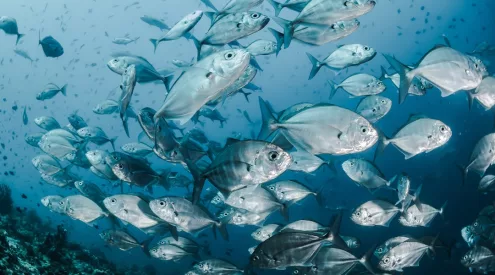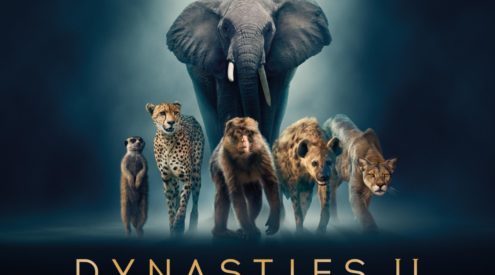On Friday 2 March 2012 one cow and two bull rhinos were poached at Kariega Game Reserve. Tragically, one bull was fatally injured and died during the course of the night, whilst the remaining two were severely mutilated, but miraculously survived and had been fighting for their lives. Unfortunately, one of the rhinos, Themba, sadly passed away this morning, 24 days after the brutal poaching attack.
This is the tribute video made for Themba. The rhino that was poached. WARNING: not for sensitive viewers.
Situated in the Eastern Cape province of South Africa, Kariega is a private game reserve forming part of the Open Africa Safari collection. When the reserve was established in 1989 it was home to a few small herds of impala, blesbok and bushbuck. Today, it is a forerunner in Eastern Cape wildlife management and conservation, boasting over 9000 hectares of pristine African wilderness.
Since 2006, more than 1000 rhino have been slaughtered for their horns in South Africa. The rhino’s horn is a prized ingredient in traditional Asian medicine, thought to cure ailments such as convulsions, fevers and also act as an aphrodisiac; all of which have no scientific basis as the rhino’s horn is made of keratin, the same substance that makes up human fingernails.
In 2008 the number of rhino poached in South Africa shot up to 83, from 13 in 2007. By 2010 the figure had soared to 333, followed by 448 recorded poachings last year. Just over two months into 2012, and 135 rhino have already been lost to poaching.
For the past two weeks, Kariega had been committed to providing their surviving rhinos with the best possible care and engaged the services of Doctor William Fowlds, a local veterinarian with extensive expertise in rhino, and a passion for his field of conservation. Kariega also had a team of full-time volunteers and qualified game rangers who were doing everything in their power to save the lives of the surviving victims.
Since 2009 there have been four poaching incidents at the reserve – but until the most recent incident, none has involved more than one animal. Geza, one of the previous victims at Kariega survived a brutal attack, but had to be put to sleep as his injuries were too severe.
Poached rhinos are rarely found alive. They are either shot with high powered weapons which usually kill them or the poachers use a tranquiliser gun and darts to immobilise the rhino and then hack a large portion of the face and nose with a machete/panga to ensure that every inch of the horn is obtained. The animal is then left to bleed to death.
With the recent escalation in this barbaric practice, South Africa is seeing a corresponding increase in the number of surviving rhinos, which experience excruciating pain and trauma and often end up having to be euthanased.
Doctor Fowlds commented, ‘With the illegal supply of veterinary drugs now appearing to be drying up, we believe that poachers are using smaller quantities of these drugs with each darting, hence more rhino are surviving the anaesthetics. Sadly this also means that the depth of immobilisation is lighter, so the poachers are hacking away at a semi-conscious animal trying to get away from the savage assault. If this is the case, game reserves will have to deal with an increased number or traumatised rhinos.’
The bravery of these two gentle giants, whom the park rangers have nicknamed Thandi and Themba, was unbelievable. Graeme Rushmere, co-owner of Kariega said, ‘This is a sad situation which has affected us all deeply. Right now we are focusing 100% of our efforts on trying to help Themba and Thandi, the two survivors, and to protect our remaining rhinos. This is no easy task and as you are aware, we have immediately dehorned our other rhinos which we also find heartbreaking but this is a desperate measure to help try and stop this carnage everywhere.’
Game reserves across South Africa, private and public, are trying to facilitate breeding, but it is extremely difficult with adult bulls and pregnant cows being taken out at a current average of one every 16 hours.
In terms of security measures, one kilogram of rhino horn fetches around R500 000, meaning that poaching syndicates are highly organised and heavily armed. Sadly, both private and public game reserves simply do not have comparable resources available to them in this bloody war.
There is no doubt that we are all aware of the brutal and violent crimes being committed against these peaceful, pre-historic creatures. There are so many factors that need to be taken into account when addressing this issue but regardless of the varying opinions, and regardless of the measures – security and otherwise – taken by private persons and organisations, this issue is a global one with its roots lying in the growing Asian demand for rhino horn. The fate of the rhino rests firmly with the global community’s ability to prompt national and international bodies into action.
To be a part of the growing global awareness campaign on rhino poaching, please share this story!
For regular updates on Thandi, visit the Open Africa Safari Collection Facebook page.
Caring for Thandi and Themba
In an effort to give Thandi and Themba (now just Thandi) the best chance possible, the Kariega Foundation has created a special fund (Help Save Our Rhino fund) dedicated solely for the care and rehabilitation of their rhino. Kariega has pledged in any event do whatever is necessary and advised by Dr Fowlds, but any contributions will be greatly appreciated. It is estimated that their full treatment and rehabilitation over the next few months (if they are to recover) could exceed R250, 000 (around £20,000).
For more information on donating, please visit Kariega’s Help Save our Rhino Project

















